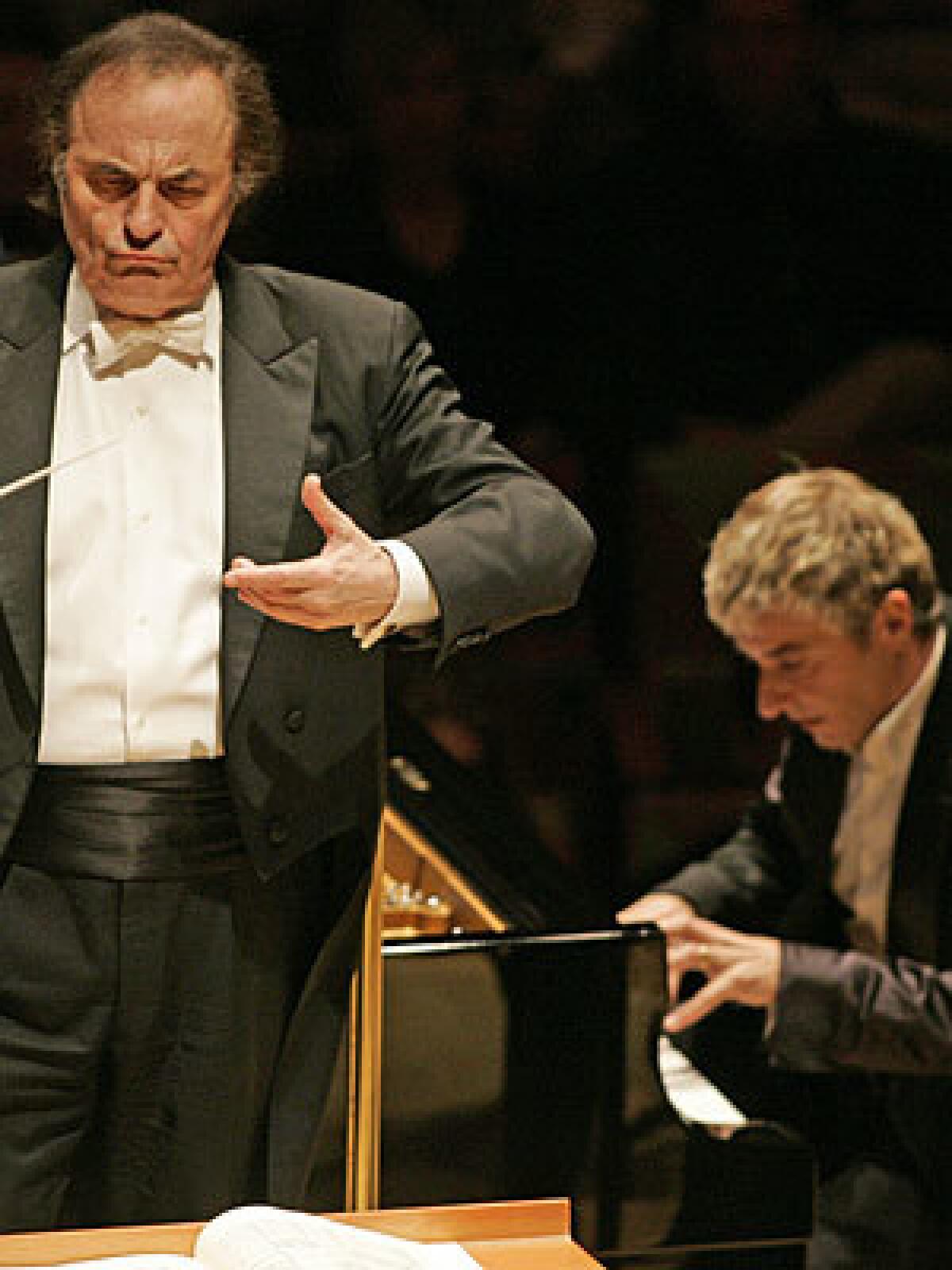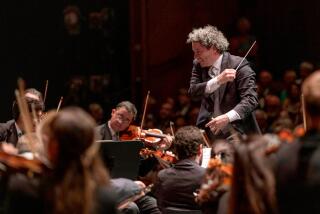Los Angeles Philharmonic plays French works

For a while, conductor Charles Dutoit made the Los Angeles Philharmonic sound like a French orchestra Thursday at Walt Disney Concert Hall.
The effect wasn’t due just to the program: works by Ravel and Saint-Saëns surrounding Grieg’s Piano Concerto in A minor, with nattily dressed French pianist Jean-Yves Thibaudet as the soloist.
It had a great deal more to do with a kind of integrated sound, a special transparency and especially a long-lined approach to phrasing.
The transparency suited Ravel’s “Ma mère l’oye” (Mother Goose) Suite, one of the composer’s most economical and magical scores, which opened the concert. The work manages both to inhabit a world of childhood innocence and to convey an adult’s nostalgia for its loss.
Dutoit opened the suite with breathless gentleness; let the little Empress of the Pagodas have her noisy, entertaining bath and modest Turandot-like processional; and tenderly showed Beauty and the Beast negotiating their slightly awkward waltz.
In the concluding section, “The Fairy Garden,” he conveyed a growing sense of something wondrous about to happen combined with a recognition that the precious moments of childhood would soon be lost forever. It was uncanny and unforgettable.
Among the sensitive soloists were concertmaster Alexander Treger, principal violist Dale Hikawa Silverman, principal cellist Peter Stumpf and harpist Lou Ann Neill.
Grieg’s concerto was long a staple of the repertory until it became something of a victim of its own popularity. Although it never quite vanished -- audiences would not allow that -- it appeared less and less frequently on serious subscription programs and more often as part of summer outdoor series, where its scintillating sense of Nordic chill offered some relief from an evening’s warmth.
Lately, though, there have been signs of a modest revival. Norwegian pianist Leif Ove Andsnes recorded it twice and performed it with the Philharmonic under Esa-Pekka Salonen at Disney Hall in 2005.
Thibaudet last played it with the Philharmonic under Lawrence Foster at the Dorothy Chandler Pavilion in 2001. At Disney, his blindingly fast octaves set the tenor of his approach. Grieg looked as difficult to perform as Rachmaninoff.
Not that Thibaudet had any difficulties. The speed, clarity and power of his playing were jaw-dropping. Yet it wasn’t percussive playing. His attacks were buttery, his passage work fluent, and even if he allowed himself some heavy foot-stomping in the dance rhythms of the final movement, his hands danced lightly and crisply over the keyboard.
For all the virtuosity, however, there wasn’t a lot of nuanced, poetic, individual expressivity, which can make the work truly vital.
Saint-Saëns’ Symphony No. 3, the “Organ” Symphony, which closed the program, is one of those guilty pleasures that Disney Hall and its pipe organ are ideal for. The sumptuous C-major chord signaling the start of the finale and the closing chords, with organ and full orchestra ablaze, were impossible to resist.
Dutoit kept all the forces in balance, propelling the music in grand sweeps yet cannily revealing details throughout. Principal trombonist Steven Witser’s slow movement solo above delicately shimmering strings was admirably rich and restrained.
Still, it was that tremendous finale, which turned Disney Hall into a French cathedral, that stuck in the mind. Joanne Pearce Martin, who played the organ from the console at the back of the orchestra, deserved the huge ovation she received.
More to Read
The biggest entertainment stories
Get our big stories about Hollywood, film, television, music, arts, culture and more right in your inbox as soon as they publish.
You may occasionally receive promotional content from the Los Angeles Times.










